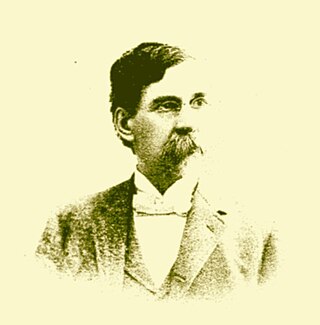
A cereal is a grass cultivated for its edible grain. Cereals are the world's largest crops, and are therefore staple foods. They include rice, wheat, rye, oats, barley, millet, and maize. Edible grains from other plant families, such as buckwheat and quinoa, are pseudocereals. Most cereals are annuals, producing one crop from each planting, though rice is sometimes grown as a perennial. Winter varieties are hardy enough to be planted in the autumn, becoming dormant in the winter, and harvested in spring or early summer; spring varieties are planted in spring and harvested in late summer. The term cereal is derived from the name of the Roman goddess of grain crops and fertility, Ceres.

Hatfield is a town and civil parish in Hertfordshire, England, in the borough of Welwyn Hatfield. It had a population of 29,616 in 2001, 39,201 at the 2011 Census, and 41,265 at the 2021 Census. The settlement is of Saxon origin. Hatfield House, home of the Marquess of Salisbury, forms the nucleus of the old town. From the 1930s when de Havilland opened a factory, until the 1990s when British Aerospace closed it, aircraft design and manufacture employed more people there than any other industry. Hatfield was one of the post-war New Towns built around London and has much modernist architecture from the period. The University of Hertfordshire is based there.

Hatfield House is a Grade I listed country house set in a large park, the Great Park, on the eastern side of the town of Hatfield, Hertfordshire, England. The present Jacobean house, a leading example of the prodigy house, was built in 1611 by Robert Cecil, 1st Earl of Salisbury and Chief Minister to King James I. It is a prime example of Jacobean architecture. The estate includes extensive grounds and surviving parts of an earlier palace. Queen Elizabeth's Oak is said the be the place that Elizabeth I was informed she had become queen. The house is currently the home of Robert Gascoyne-Cecil, 7th Marquess of Salisbury. It is open to the public.

Nabisco is an American manufacturer of cookies and snacks headquartered in East Hanover, New Jersey. The company is a subsidiary of Illinois-based Mondelēz International.

A grain elevator is a facility designed to stockpile or store grain. In the grain trade, the term "grain elevator" also describes a tower containing a bucket elevator or a pneumatic conveyor, which scoops up grain from a lower level and deposits it in a silo or other storage facility.

Welwyn Hatfield is a local government district with borough status in the county of Hertfordshire, England. Its council is based in Welwyn Garden City. The borough borders Hertsmere, St Albans, North Hertfordshire, East Hertfordshire, Broxbourne, and the London Borough of Enfield.

Welwyn Garden City is a town in Hertfordshire, England, 20 miles (32 km) north of London. It was the second garden city in England and one of the first new towns. It is unique in being both a garden city and a new town and exemplifies the physical, social and cultural planning ideals of the periods in which it was built.

Weet-Bix is a whole-grain wheat breakfast cereal created and manufactured in Australia and New Zealand by the Sanitarium Health Food Company, and in South Africa by Bokomo.
Post Consumer Brands is an American consumer packaged goods food manufacturer headquartered in Lakeville, Minnesota.

Cereal Partners Worldwide S.A. is a joint venture between General Mills and Nestlé, established in 1991 to produce breakfast cereals. The company is headquartered in Lausanne, Switzerland, and markets cereals in more than 130 countries.

Shreddies are a breakfast cereal marketed in Canada, the United Kingdom and Ireland. It was first produced in Canada in 1939 by Nabisco. The Shreddies brand is held by Post Consumer Brands in Canada, and Nestlé in the United Kingdom and Ireland.

Shredded wheat is a breakfast cereal made from whole wheat formed into pillow-shaped biscuits. It is commonly available in three sizes: original, bite-sized and miniature. Both smaller sizes are available in a frosted variety, which has one side coated with sugar and usually gelatin. Some manufacturers have produced "filled" versions of the bite-size cereal containing a raisin at the center, or apricot, blueberry, raspberry, cherry, cranberry or golden syrup filling.

Henry Drushel Perky was a lawyer, businessman, promoter and inventor. Perky is the inventor of shredded wheat.

Frosted Mini-Wheats is a breakfast cereal manufactured by WK Kellogg Co consisting of shredded wheat cereal pieces and frosting.

Louis Emanuel Jean Guy de Savoie-Carignan de Soissons CVO RA FRIBA (1890–1962) was the younger son of Charles de Savoie-Carignan, Count de Soissons. An architect, he was called for professional purposes Louis de Soissons.

Staverton Mill is an historic woollen mill and now a cereal factory on the River Avon in the village of Staverton near Trowbridge, Wiltshire, England.
Welwyn Studios was a British film studio located at Broadwater Road, Welwyn Garden City, in Hertfordshire. The facility operated between 1928 and 1950.

The Millennium Mills is a derelict turn of the 20th century flour mill in West Silvertown on the south side of the Royal Victoria Dock, between the Thames Barrier and the ExCeL London exhibition centre alongside the newly built Britannia village, in Newham, London, England. The Mills are currently undergoing a major renovation as part of a £3.5billion redevelopment of Silvertown.

The Council Offices, also known as the Welwyn Hatfield Borough Council Offices, is a municipal building on The Campus in Welwyn Garden City, Hertfordshire, England. The structure accommodates the offices and meeting place of Welwyn Hatfield Borough Council.





















